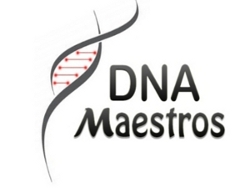Biomod/2012/IITG/DNA Maestros: Difference between revisions
No edit summary |
No edit summary |
||
| Line 10: | Line 10: | ||
*Students | *Students | ||
**Shaunak Kar | **Shaunak Kar | ||
**Anand | **Anand Saminathan | ||
**Harshavardhan Reddy | **Harshavardhan Reddy | ||
**Bharath Srikanth | **Bharath Srikanth | ||
Revision as of 01:00, 26 September 2012

Home Introduction The Project Materials & Methods Results and Discussion Conclusion Team Members Acknowledgements
The official OpenWetWare wiki of the IITG team at BIOMOD'12
- Team Name: DNA Maestros
- Institution: Indian Institute of Technology, Guwahati
- Location: Indian Institute of Technology, Guwahati
- Faculty Mentor: Yamuna Krishnan
- Graduate Mentors: Dhiraj Bhatia, Anusuya Banerjee
- Students
- Shaunak Kar
- Anand Saminathan
- Harshavardhan Reddy
- Bharath Srikanth
- Bharath Kumar
Project Title: Small molecule triggered cargo release from a designer DNA polyhedron
Abstract:
The unique properties of DNA such as its persistence length and specific associations enabled by Watson-Crick base pairing have helped it emerge as a powerful substrate for nanoconstruction. Three dimensional polyhedra based on DNA are emerging as strong candidates for display and delivery of small biomolecules in living systems. However, achieving controlled release of the encapsulated cargo with spatial and temporal control aided by molecular cues remains a challenge. Here, we show the controlled opening of a complex DNA polyhedron i.e the icosahedron, in response to an external trigger, namely cyclic-di-GMP (c-di-GMP). The icosahedron is engineered with aptamers for c-di-GMP which act as locks for the icosahedral cage. In the presence of c-di-GMP, these aptameric locks remodel due to formation of tertiary structure that results in the dissociation of the icosahedron into its two constituent halves due to strand displacement. This leads to release of encapsulated internal cargo, such as fluorescent Dextran. Using various fluorescence methods such as quenching and RET, we elucidate tight control over the opening of the DNA icosahedron. This suggests that cargo-loaded polyhedra can be integrated with naturally occuring pathways and their specific secreted molecular cues that in turn provide spatial and/or temporal control over cargo release in diverse contexts.